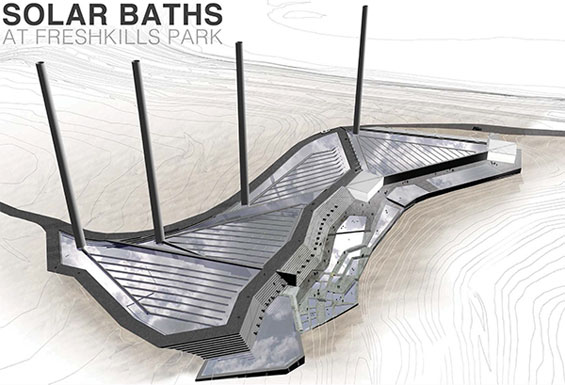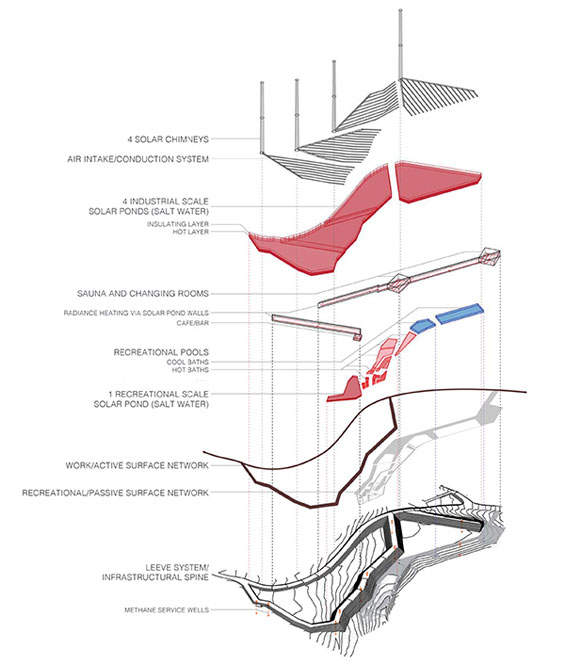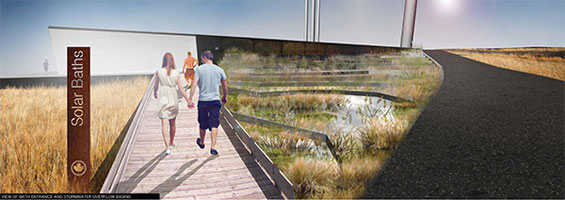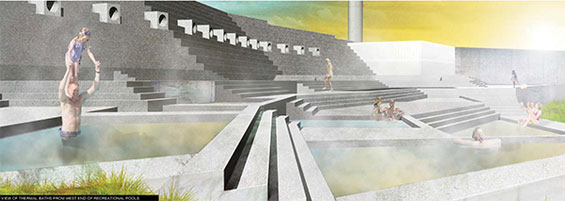On the southern face of the Freshkills landfill’s North mound, four large ponds of salt water capture and store heat radiating from both the sun and the landfill. Each pond is coupled with a tall solar chimney that extracts the heat and converts it to electricity. Multiple smaller salt ponds utilize the same heat to create an artificial hot springs for New York: The Solar Baths at Freshkills Park. The entire system is driven by the concept of the heat-cascade: the multi-stage reuse of residual thermal energy by temperature level. It aims to make that concept tangible to New Yorkers by inviting them to bathe in the heat of their own trash.

Hot springs naturally occur when water is heated by geothermal energy escaping from the earth’s crust, often in zones of volcanic activity. According to geologist Richard Fortey, hot springs bathers can wash in water heated by the process of creation. But unlike traditional springs, the water at The Solar Baths is heated, at least partially, by the process decomposition. The garbage may be hidden from view by the landfill cap, but bathers will feel its touch in the warmth of the bathwater.

The intrusion of the Solar Baths’ four tall chimneys into the skyline of Staten Island will hopefully cause the population first to wonder at them, and then to learn about and understand them. The ponds are complex only due to their scale; the principles that drive them are in fact simple, elegant, even mundane. Similarly, the problems of energy production can seem daunting; but they are derived from the collected banalities of our daily consumption. Recognizing the commonplace within the Solar Baths might lead visitors to realize their own agency and actively engage the problems of energy production.


STUDENT PROJECT | The Solar Baths at Freshkills Park | Ian Mackay and Steve Muza
Produced in Jacob Boswell’s Spring 2012 Studio at The Ohio State University’s Knowlton School of Architecture
Status: Unbuilt



Comments are closed.